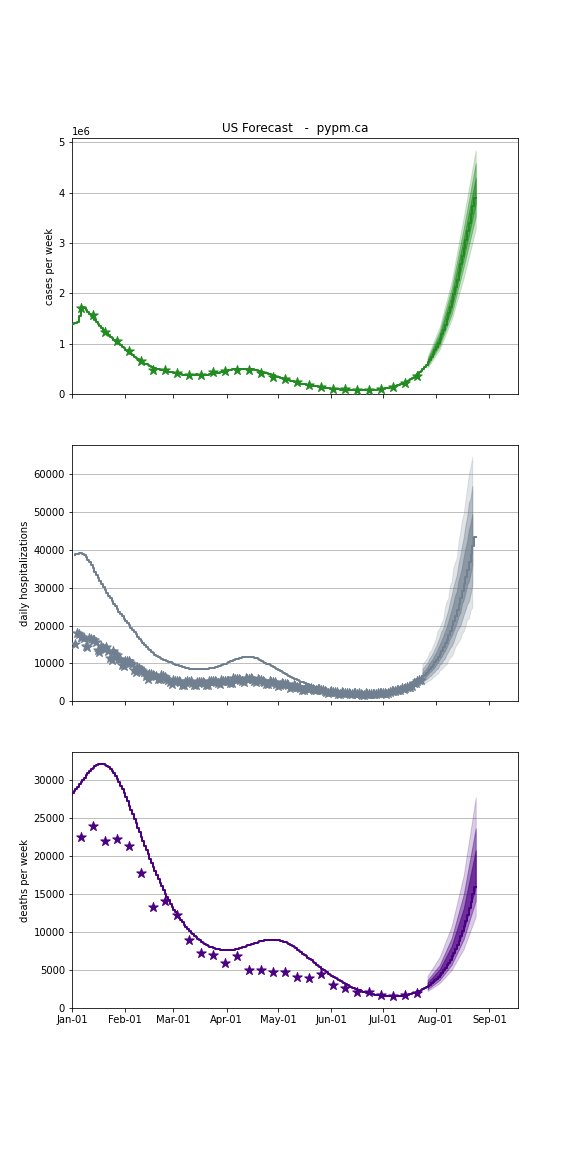July 25, 2021 Analysis of USA state data
Studies of variant prevalence and growth advantage
Genomic analysis using GISAID data from outbreak.info
Many states submit whole genomic sequencing data to GISAID that can be used to track the growth of VoC state by state. The ratios of delta (B.1.617.2), gamma (P.1), and iota (B.1.526) to alpha (B.1.1.7) cases are shown in the plots below, where it is evident that both delta and gamma have higher transmission than alpha, with delta significantly larger. Also shown are B.1.621 and C.37. Sub lineages have been included in the main lineages (so AY.1, AY.2, and AY.3 are included in delta, for example). All other strains are combined in the group designated ‘nota’ (none of the above). For states with insufficient data to estimate the selection coefficient, they are fixed at 0.08 (0.02) for delta (gamma), in order to estimate the current delta prevalence, and the lines are shown as dashed in the figures below.

A summary of the estimated selection coefficients for each state are below.
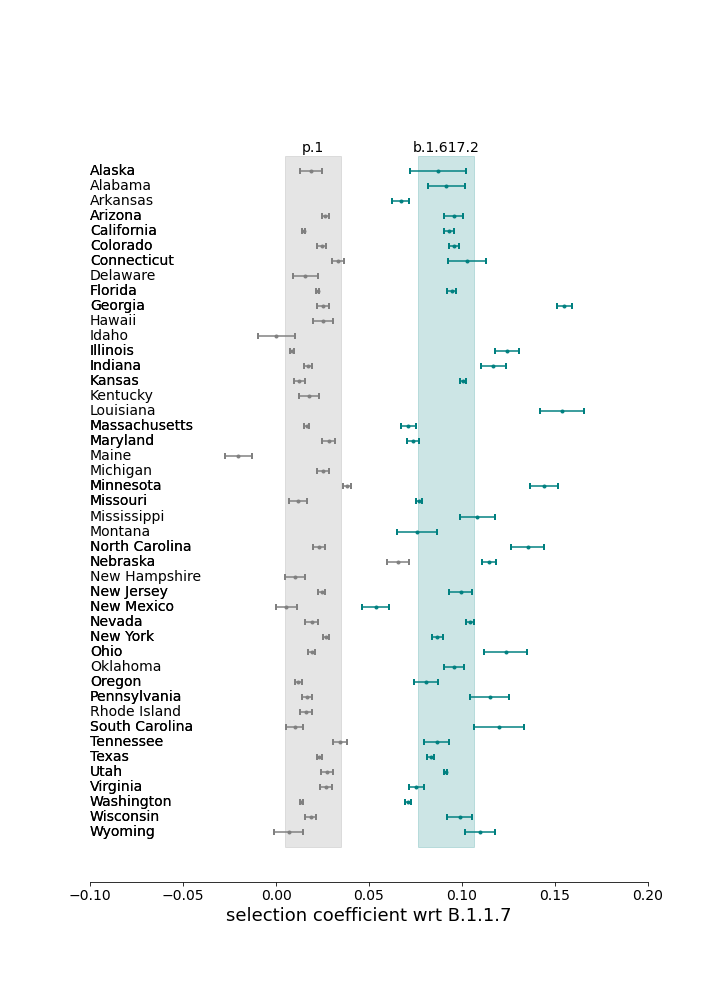
The mean selection coefficient for delta (gamma) is 0.092 (0.020). There is large variance in the estimates from each state.
Swing in growth rates due to delta and relaxation
The selection coefficient for delta (wrt alpha) indicates that the daily growth rate for delta is about 9% per day larger than the daily growth rate for alpha (under the same circumstances. The emergence of delta has occured at the same time as
At the same that the delta variant has emerged, there has been general relaxation of health measures. As a result, the swing in growth rate is much larger than 9% in the past several week. The figure below shows the distribution of growth swing for the states, having a mean of 15% and standard deviation of 3%.
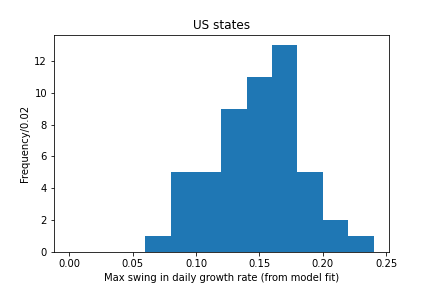
The growth of delta in the US is now on average 9% per day with a standardard deviation of 3%.
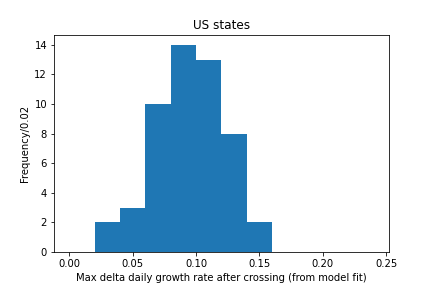
Individual state histories
The plots below show the case / hospitalization / deaths data for all 50 states, DC, and PR. The data fits were done using data up until July 24, 2021.
The green points are the daily cases, the grey points the daily hospitalizations, and indigo points are the daily deaths (each averaged over a week). The case data are used to define the periods for which transmission rate appears to be constant. The vertical lines show where the transmission rate is changed. If the susceptibe fraction is constant (immunity not changing quickly), constant transmission rates lead to steady exponential growth or decline during, which appear as straight lines on these log-scale plots. With immunity growing, these lines are no longer straight - bending downwards due to the herd effect. The curves are the model expectations for cases, hospitalizations, and deaths, and for most states all three are determined from the case data. These states: AR, CA, FL, IL, KY, LA, MA, MD, MI, MN, MS,NJ,NY,OH,OK, VA were found to have hospitalization growth rates significantly less than their case growth rates, and therefore hospitalization data was used to define the most recent trajectories for hospitalizations and deaths.
The dashed curves separately show the reported cases from the original strains and from variants of concern, divided into two types B.1.1.7 (alpha) and B.1.617.2 (delta).
At the bottom of this page, plots showing the combined forecast for the US are shown.
Alaska
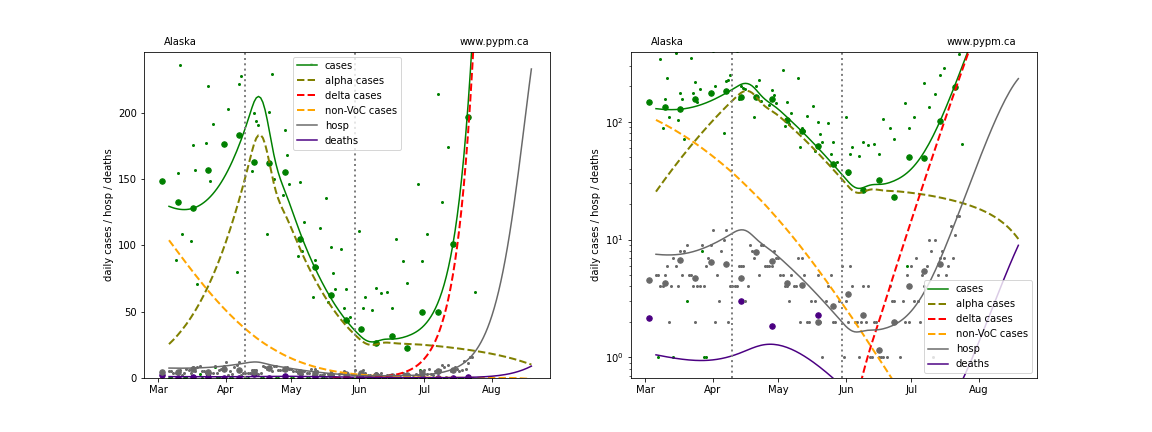
Alabama
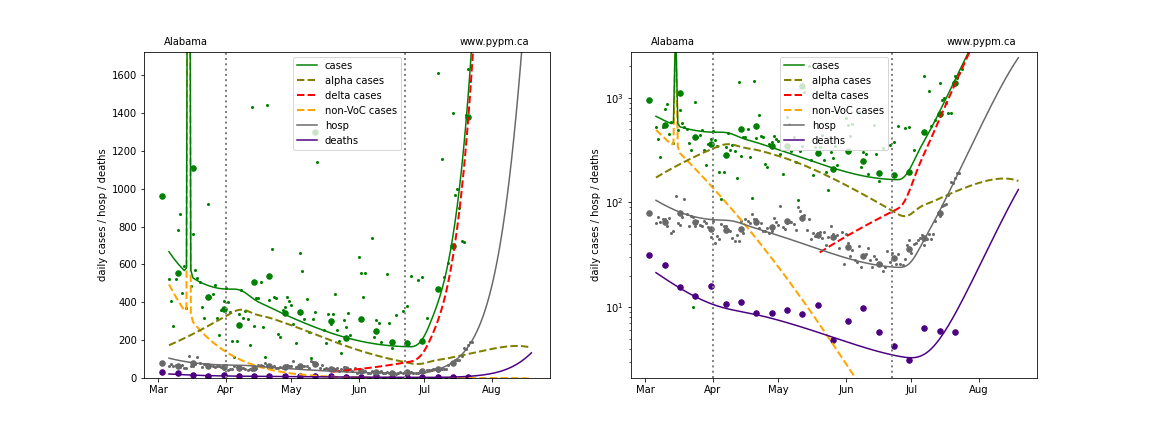
Arkansas
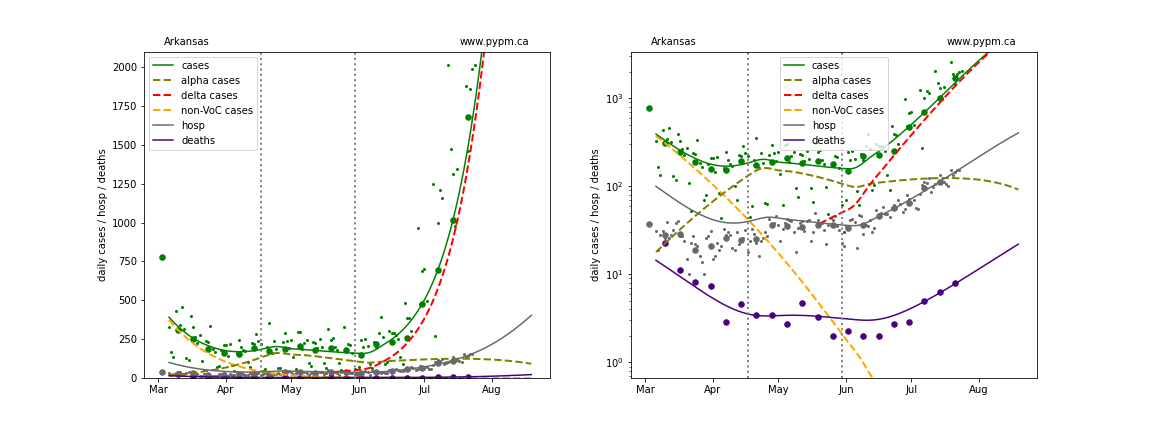
Arizona
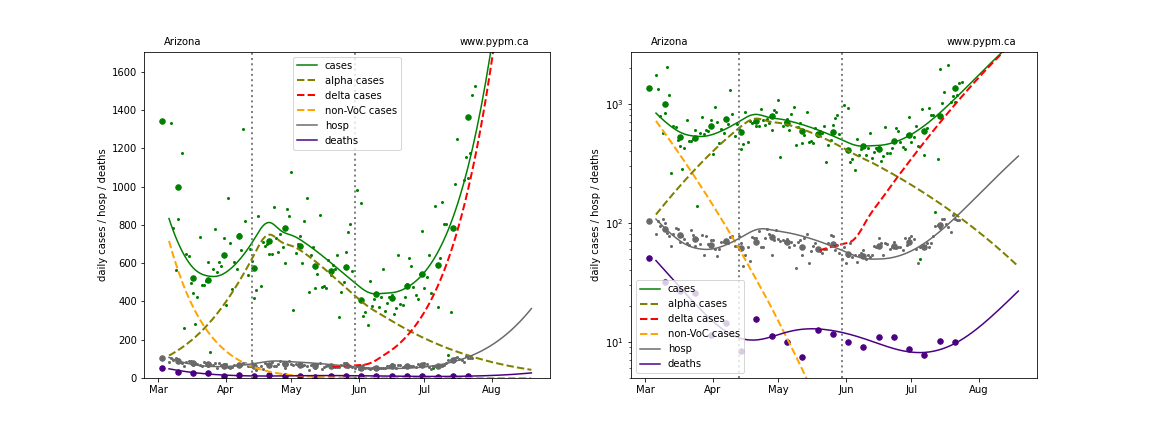
California
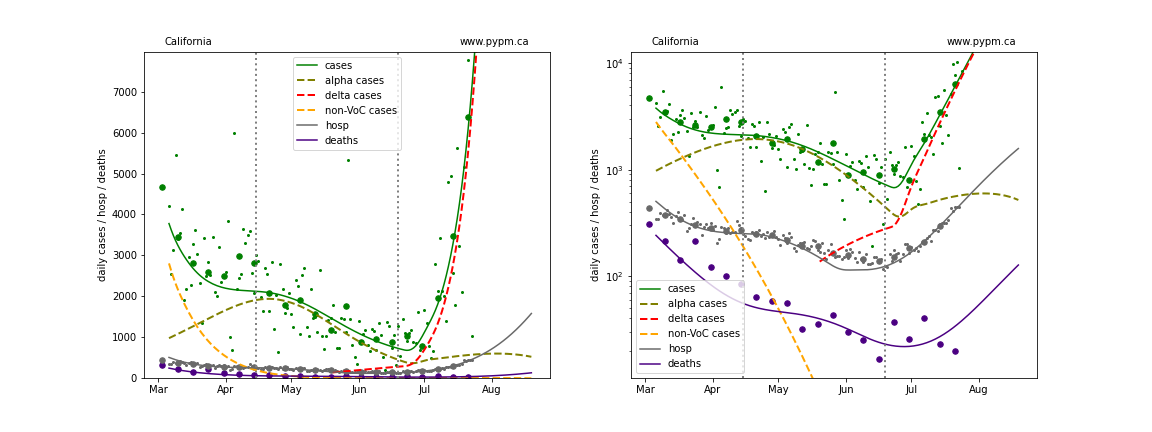
Colorado
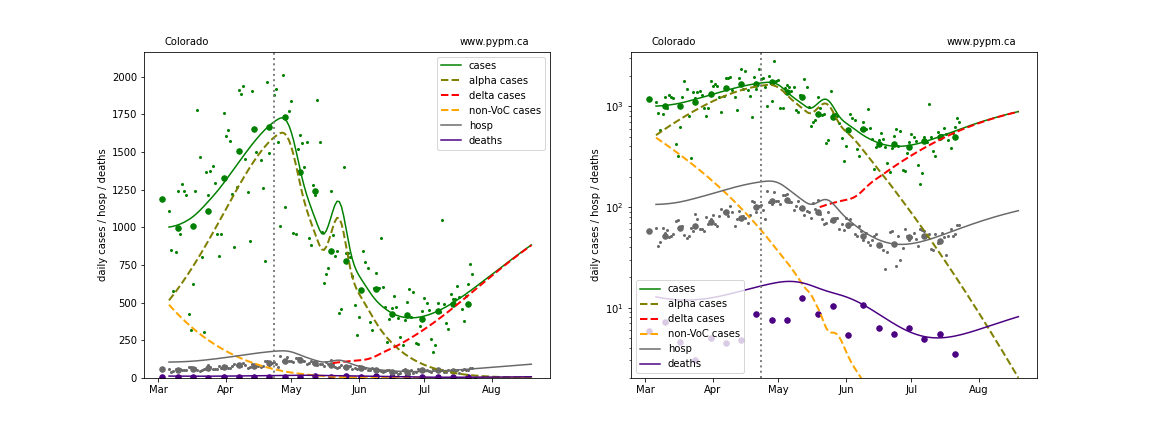
Connecticut
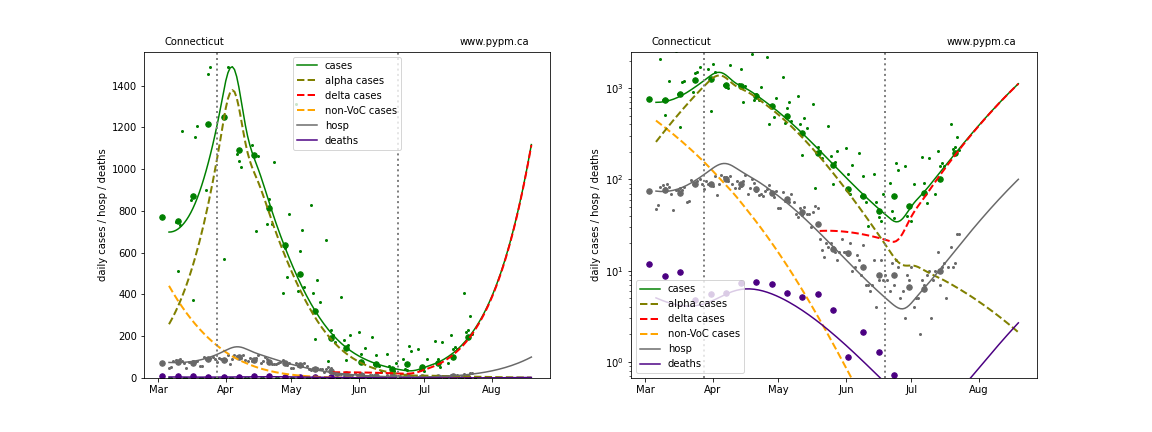
District Of Columbia

Delaware
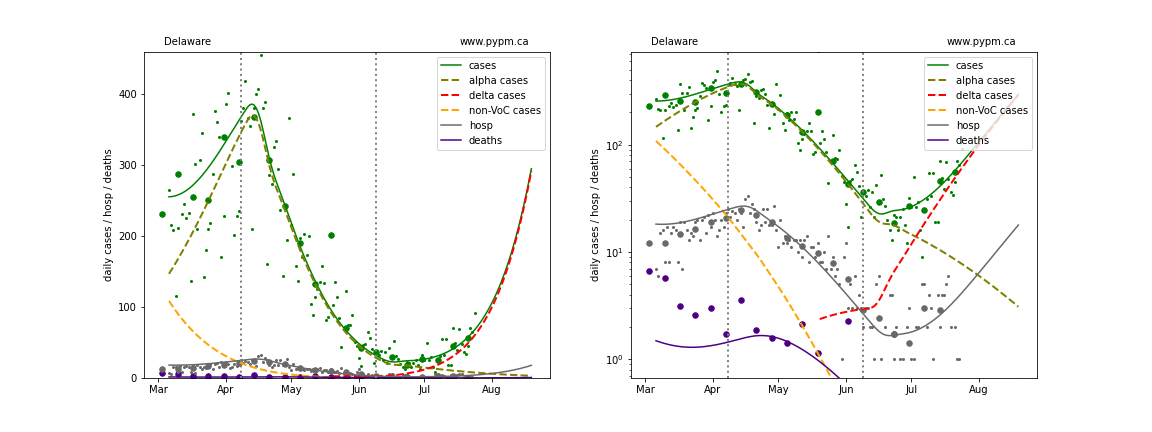
Florida
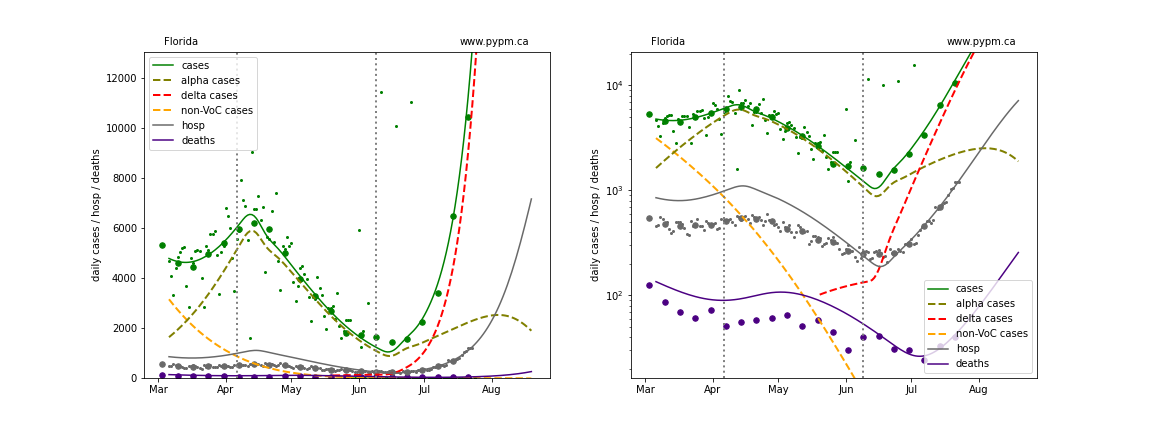
Georgia
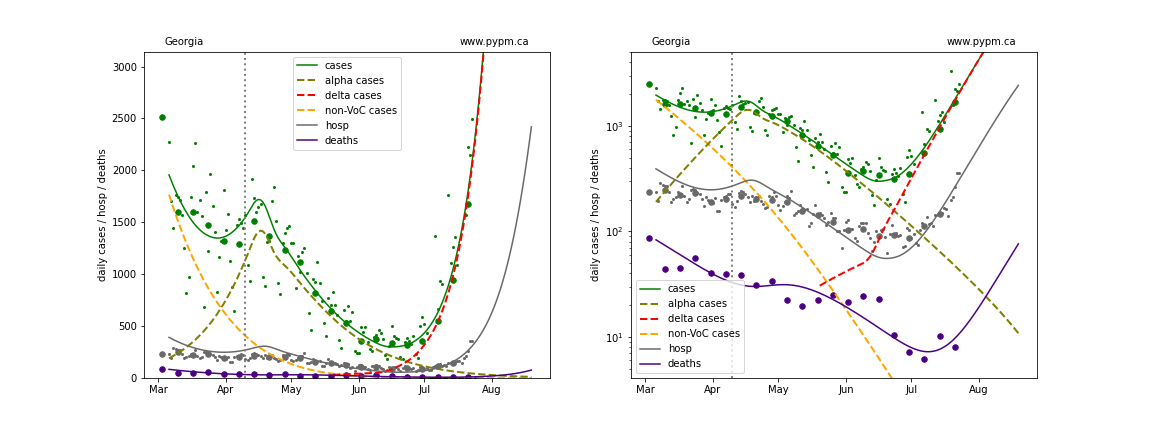
Hawaii
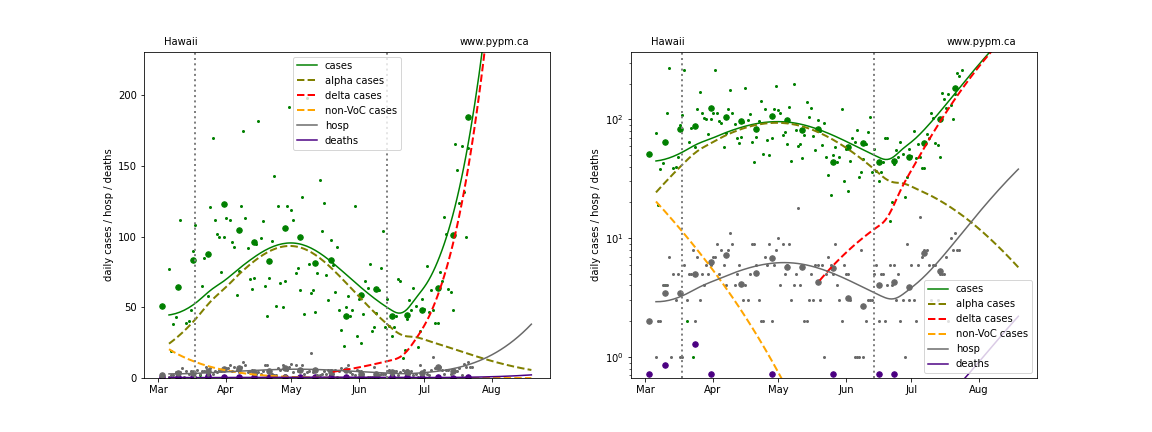
Iowa
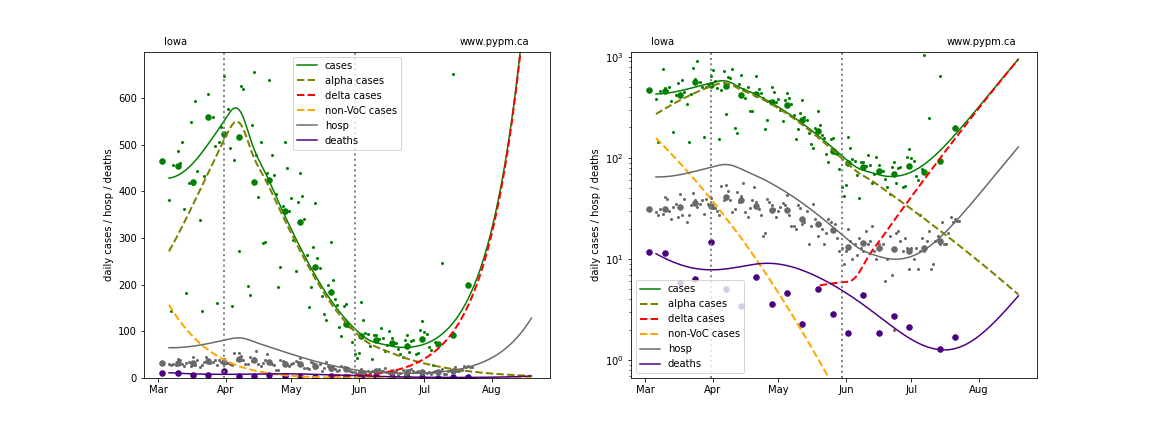
Idaho
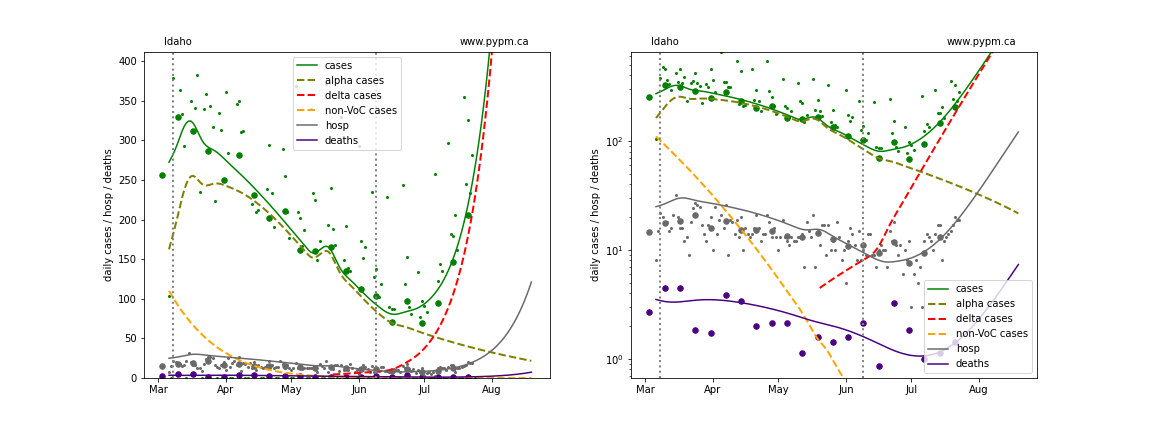
Illinois
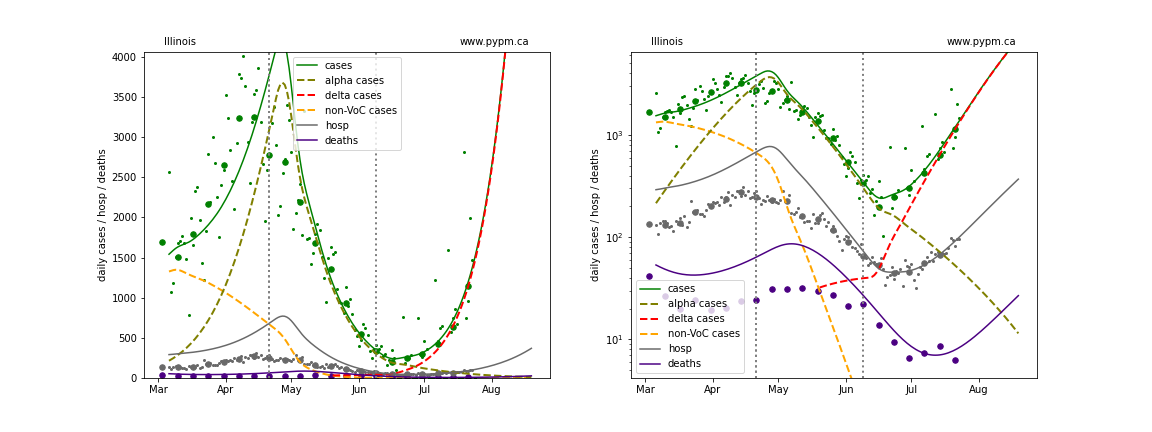
Indiana
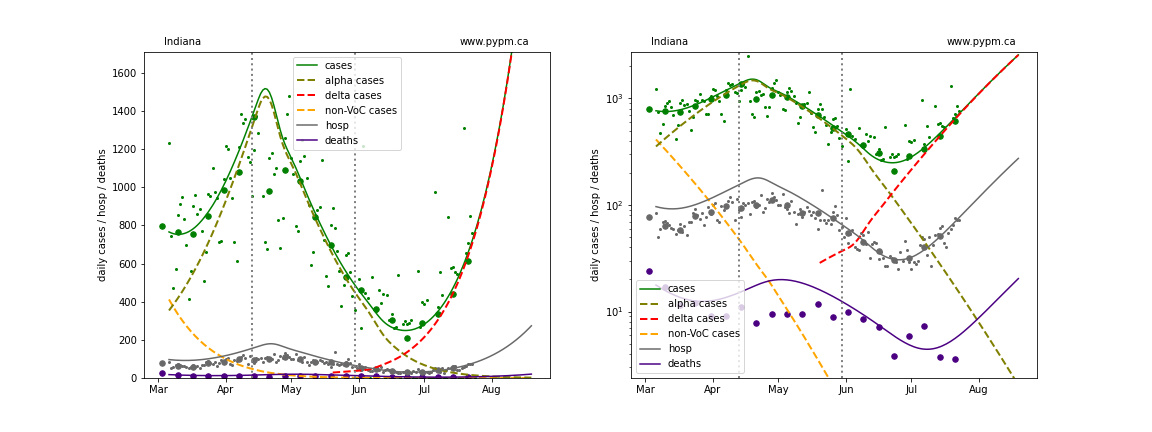
Kansas
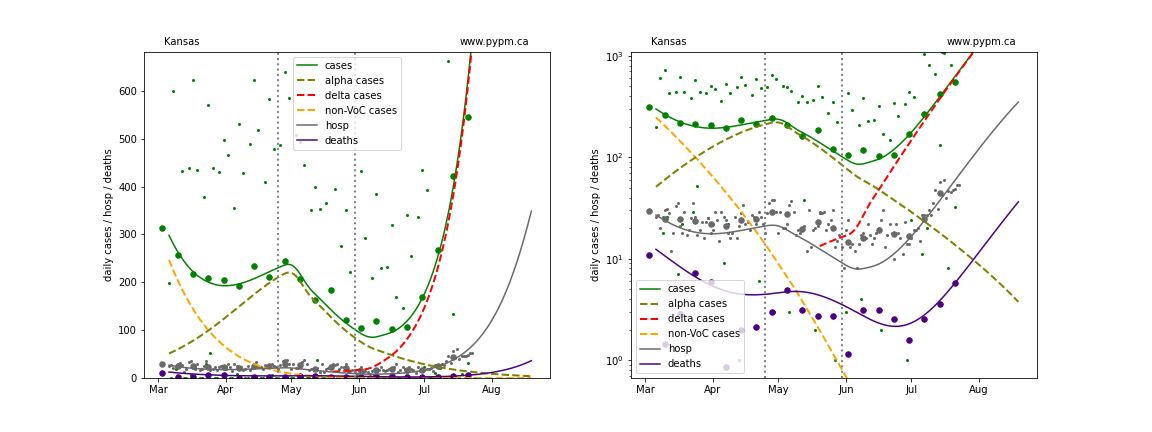
Kentucky
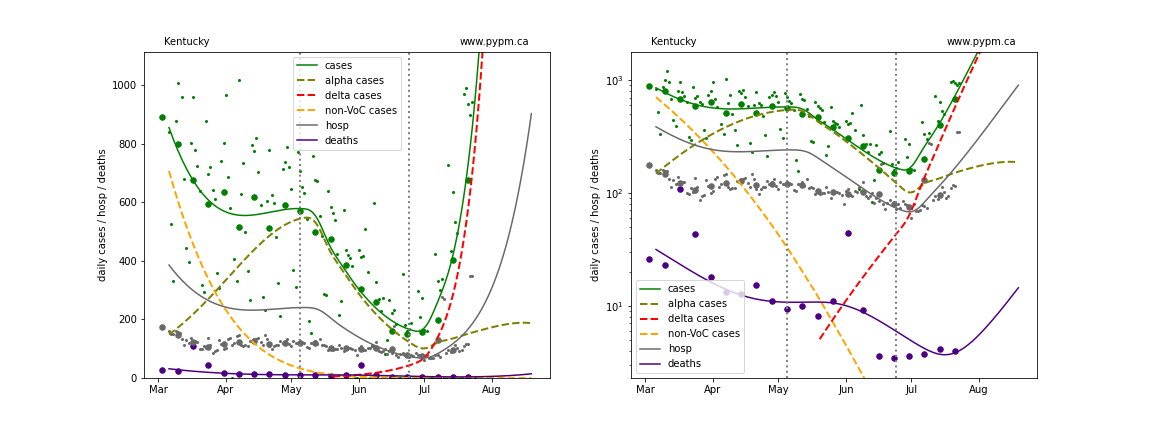
Louisiana

Massachusetts
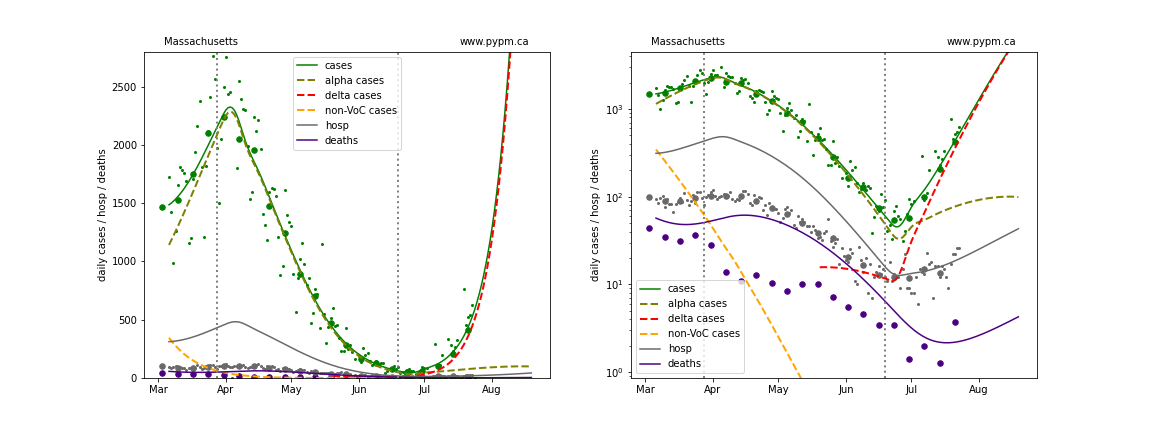
Maryland
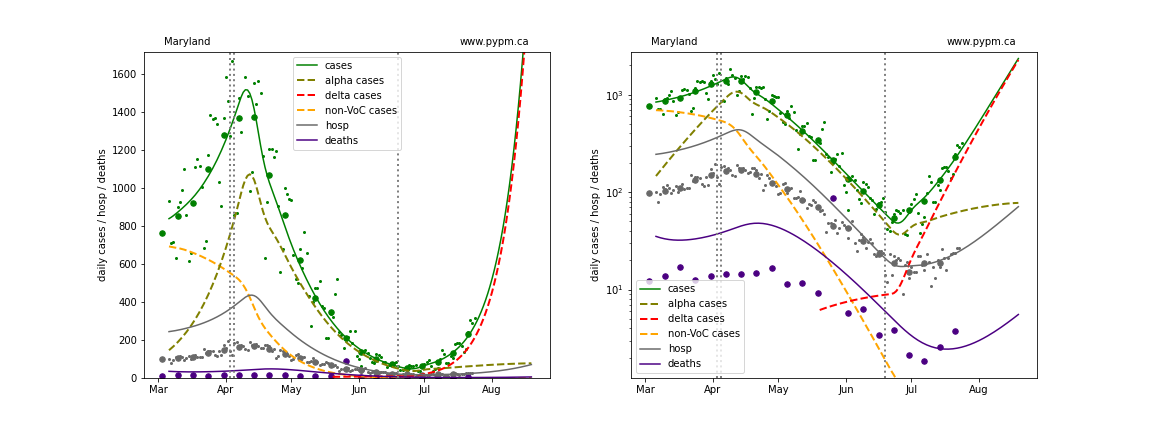
Maine
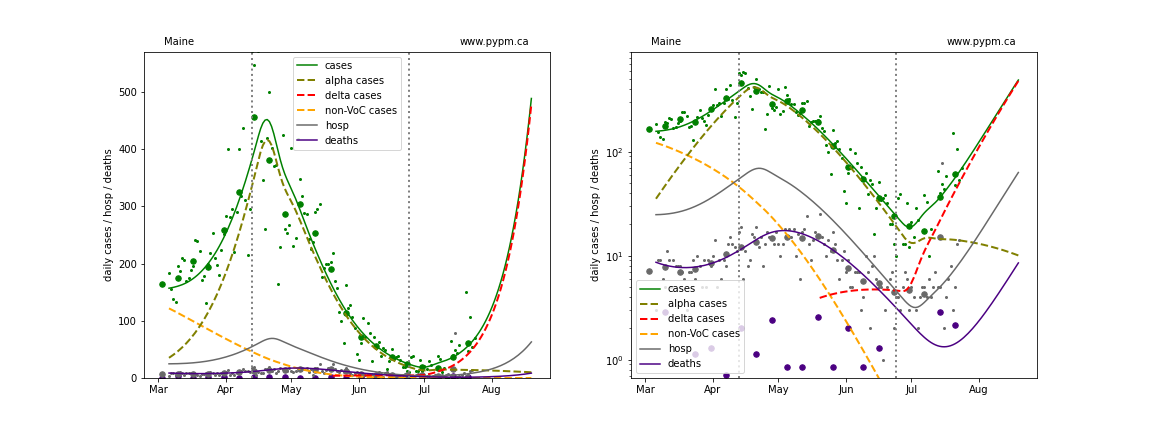
Michigan
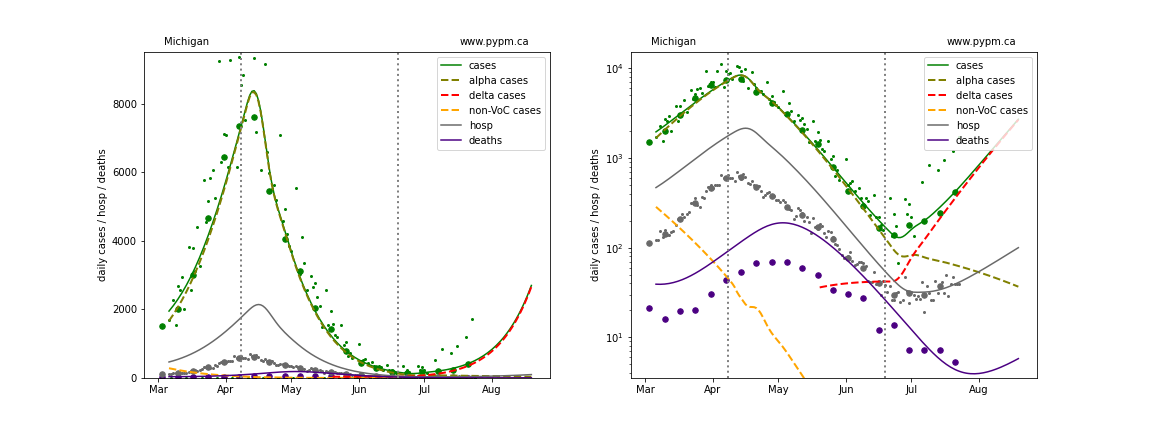
Minnesota
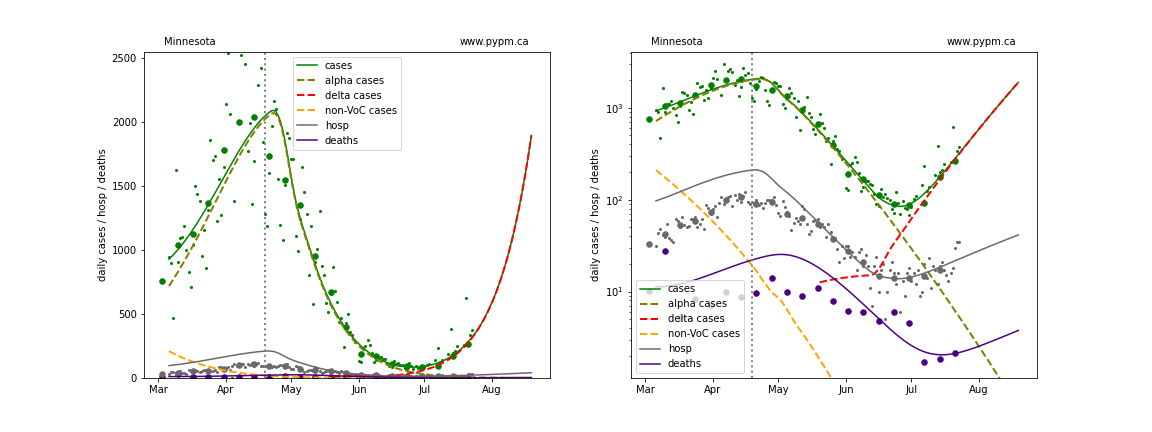
Missouri
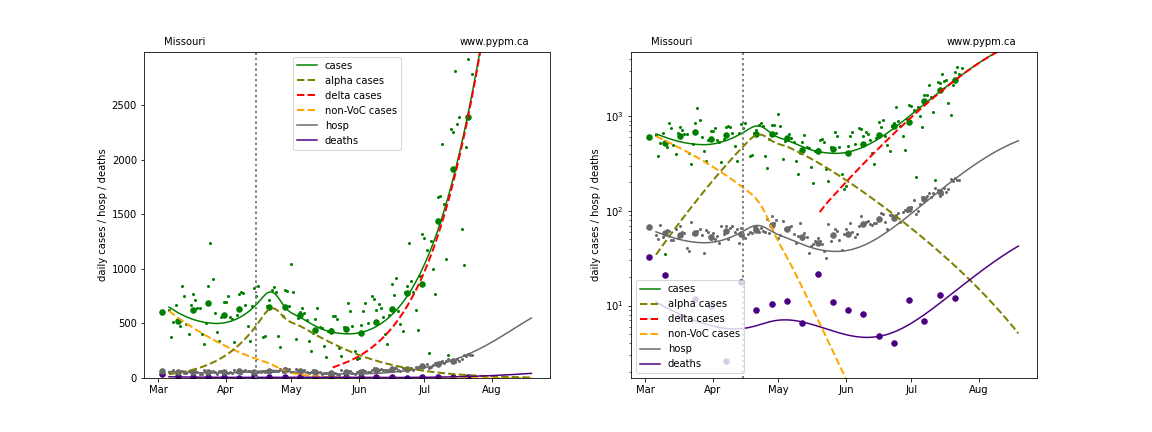
Mississippi
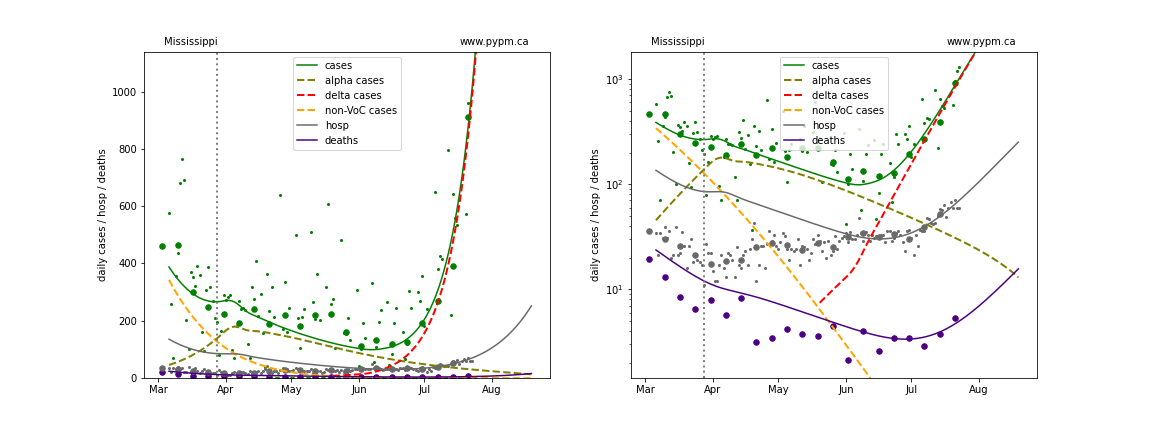
Montana
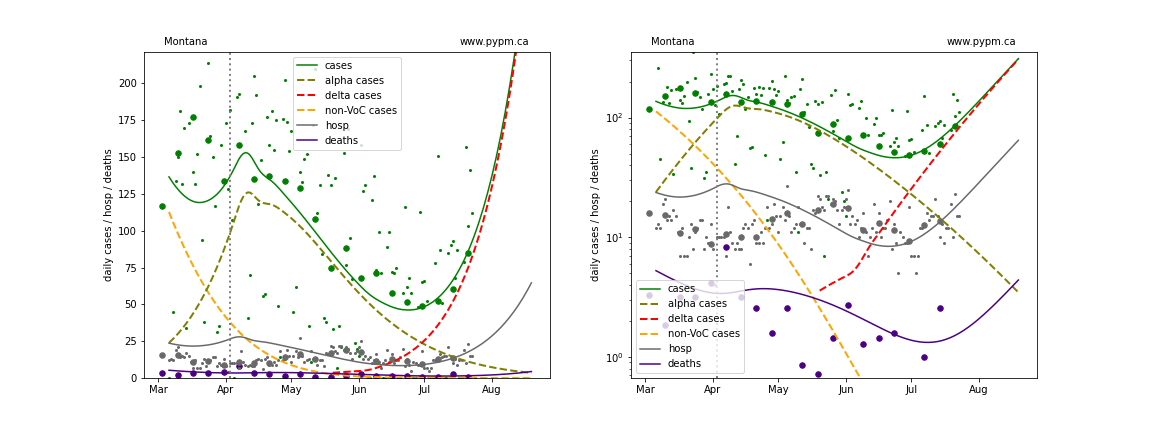
North Carolina
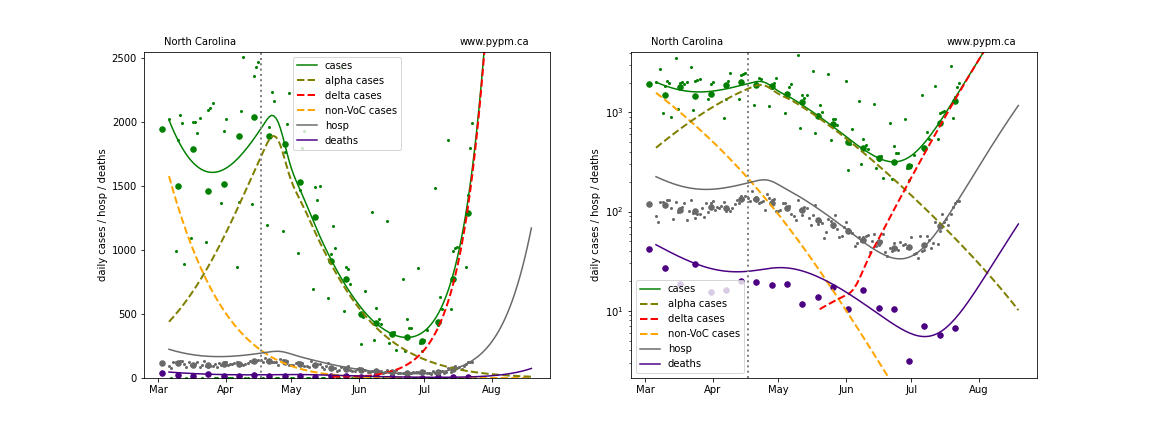
North Dakota
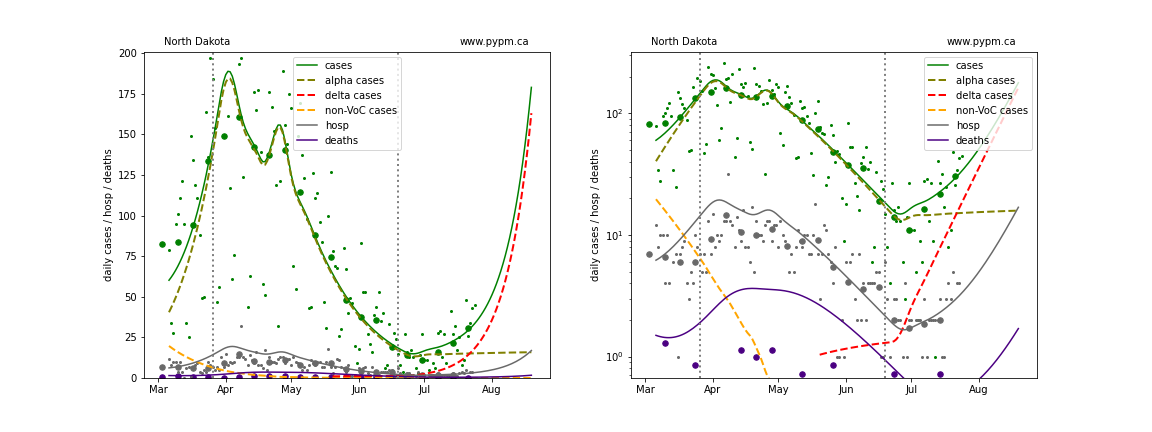
Nebraska
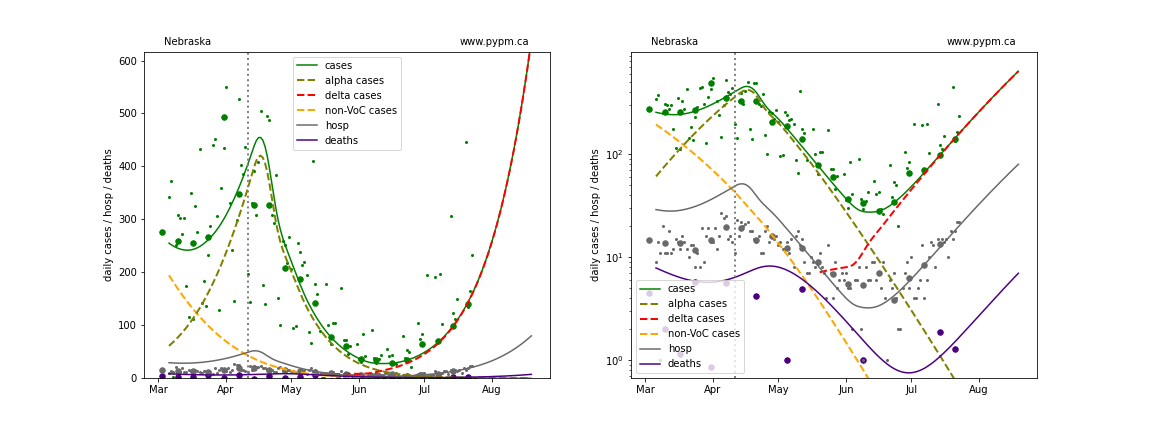
New Hampshire
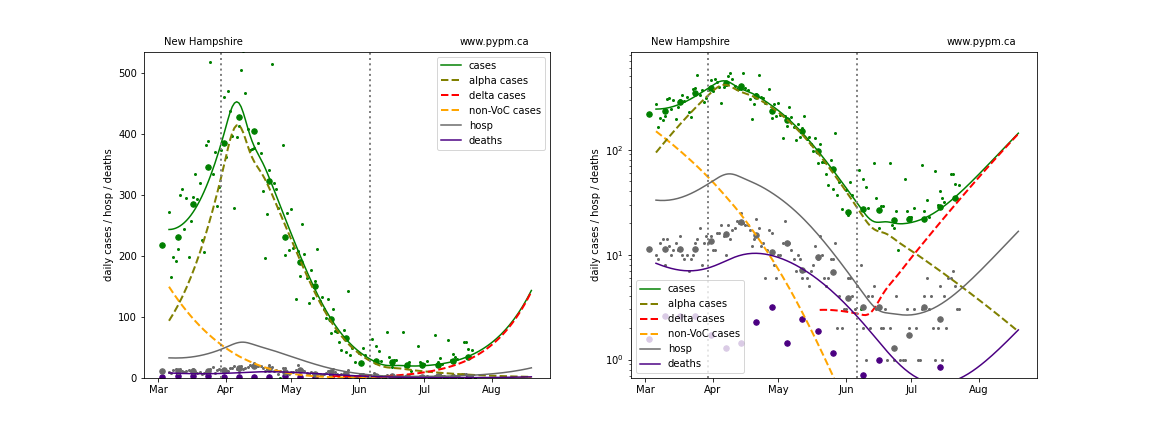
New Jersey
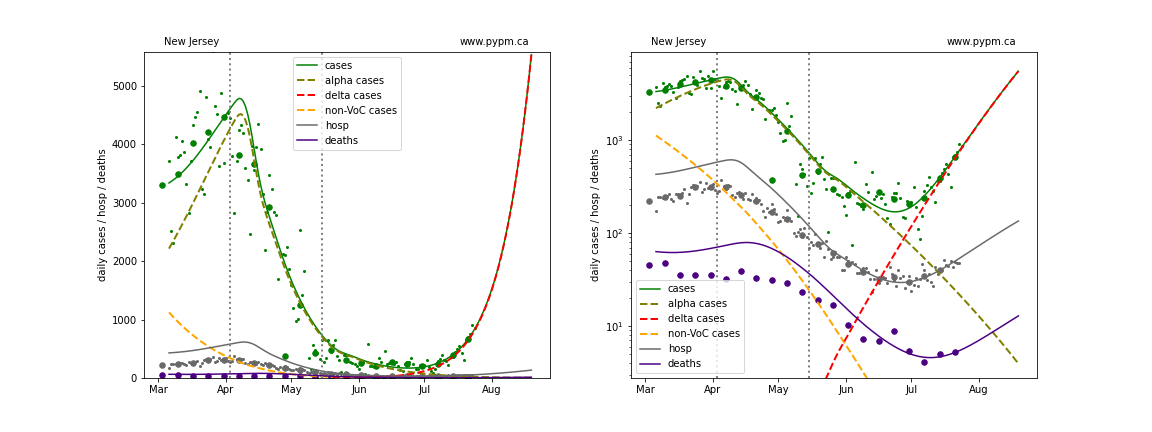
New Mexico

Nevada
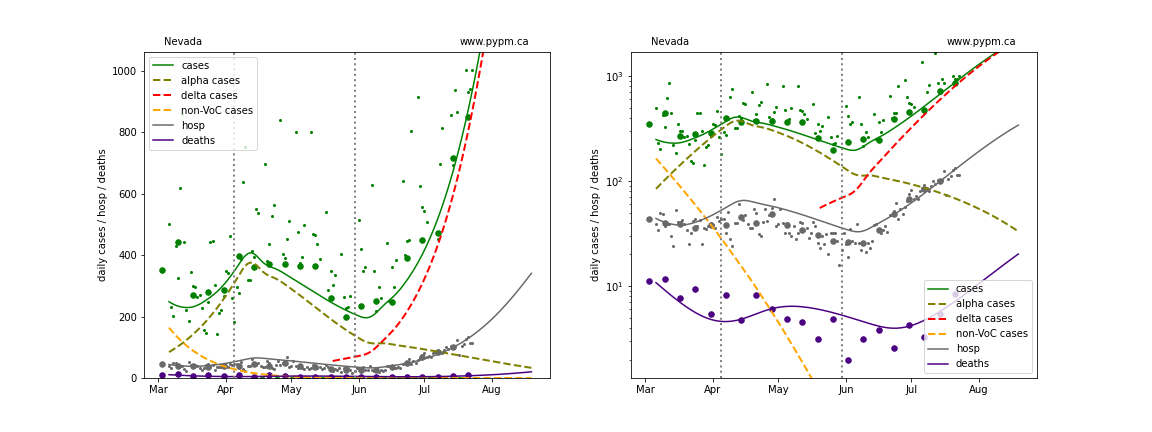
New York
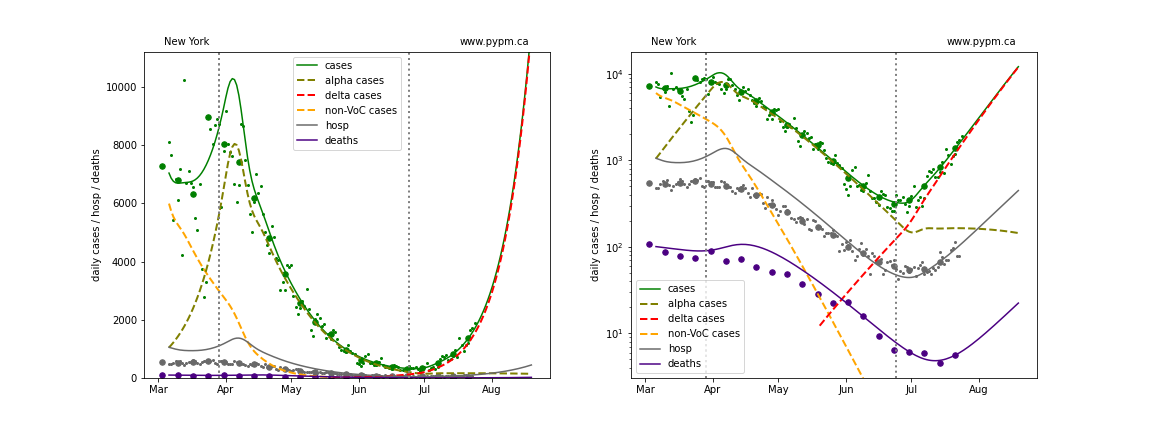
Ohio
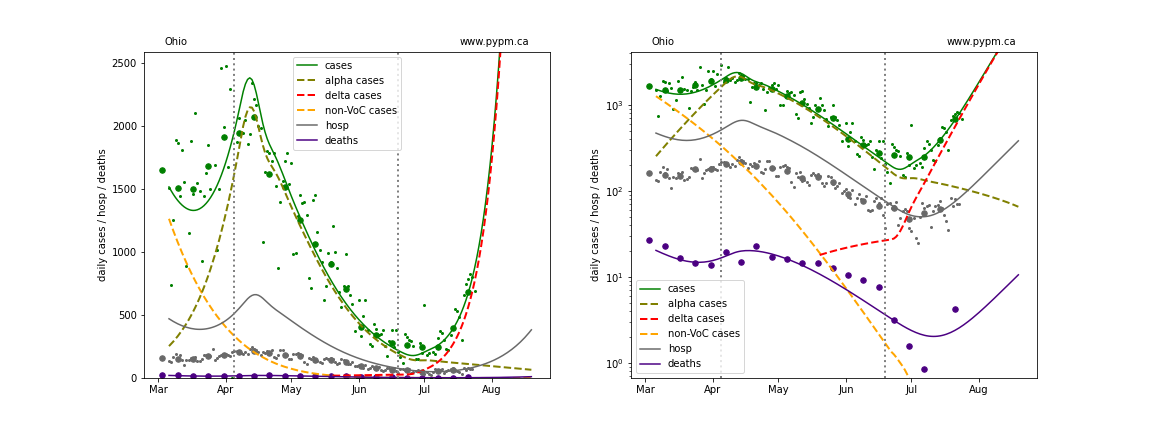
Oklahoma
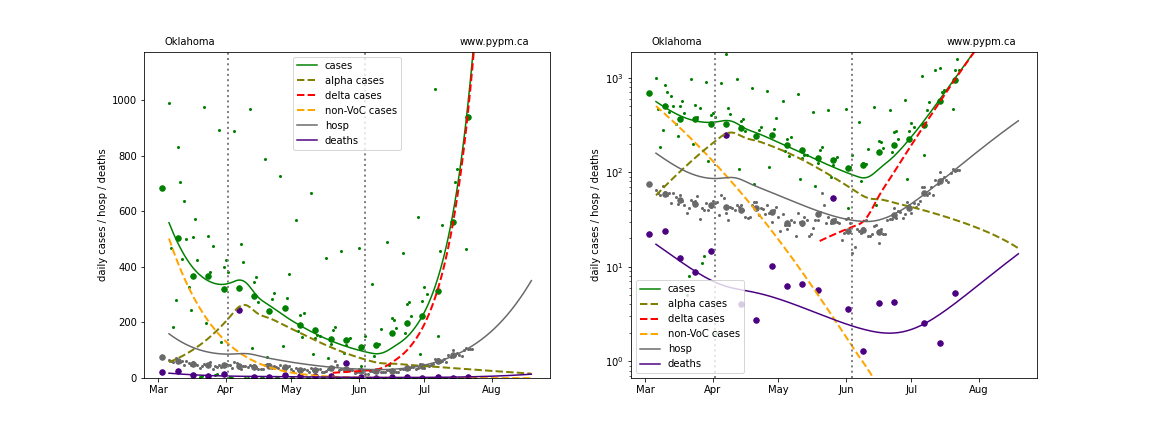
Oregon
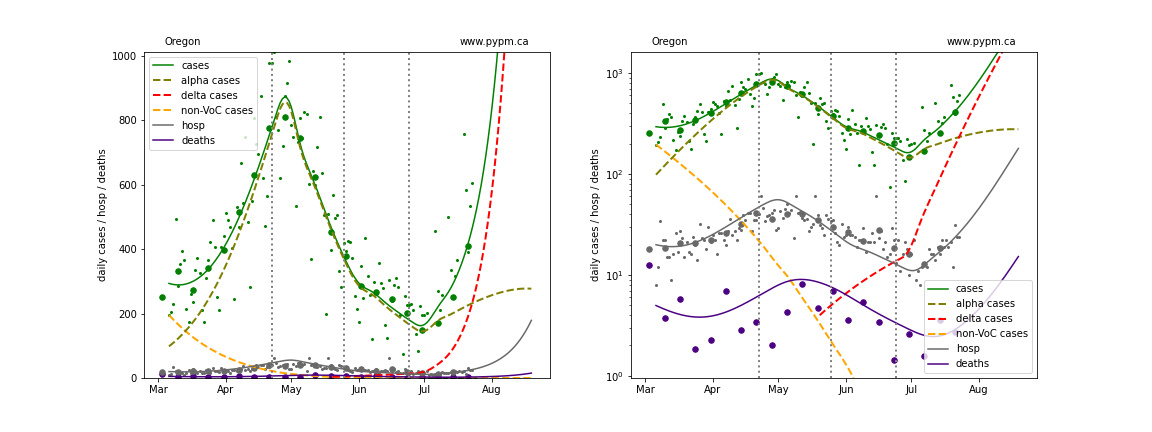
Pennsylvania
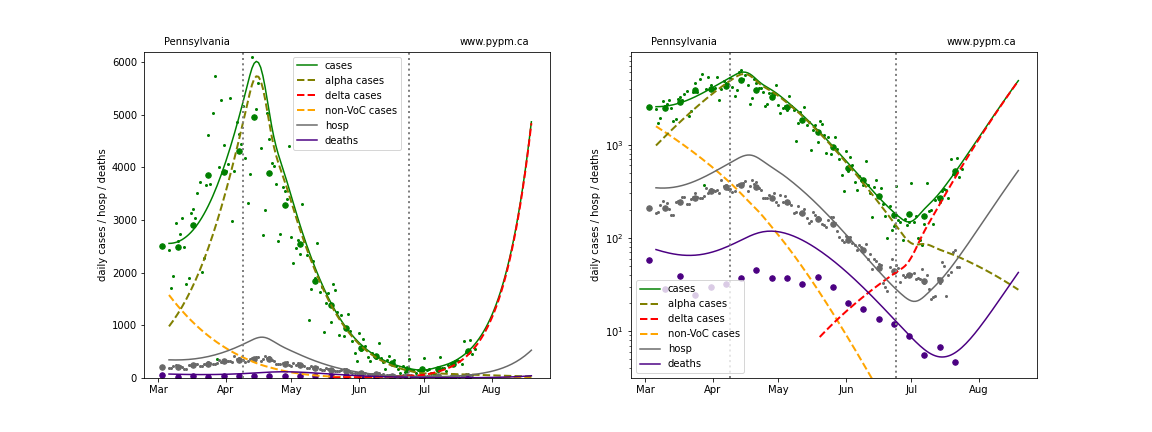
Puerto Rico

Rhode Island

South Carolina
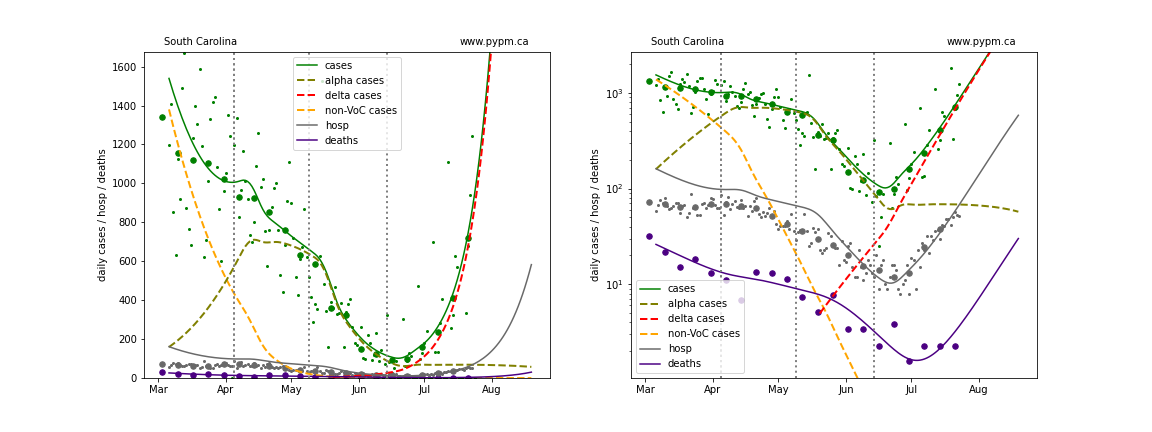
South Dakota
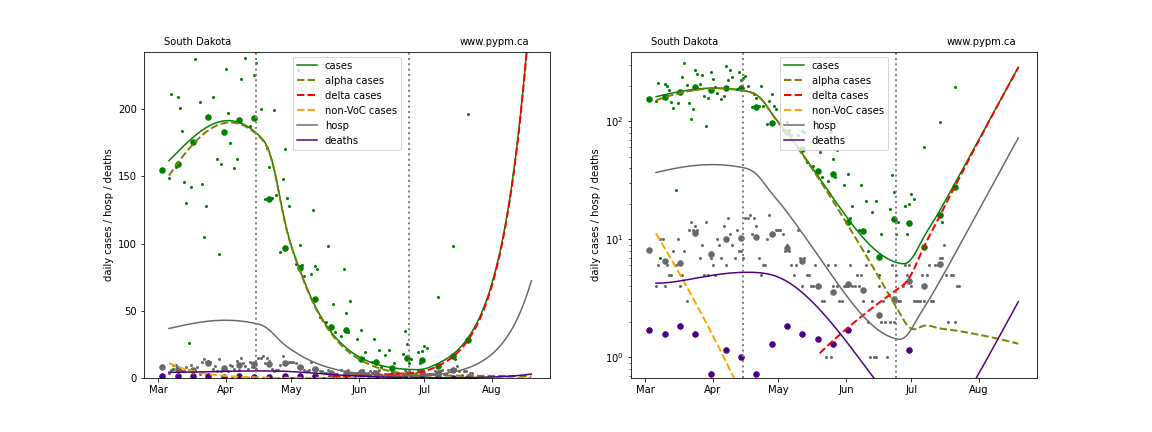
Tennessee
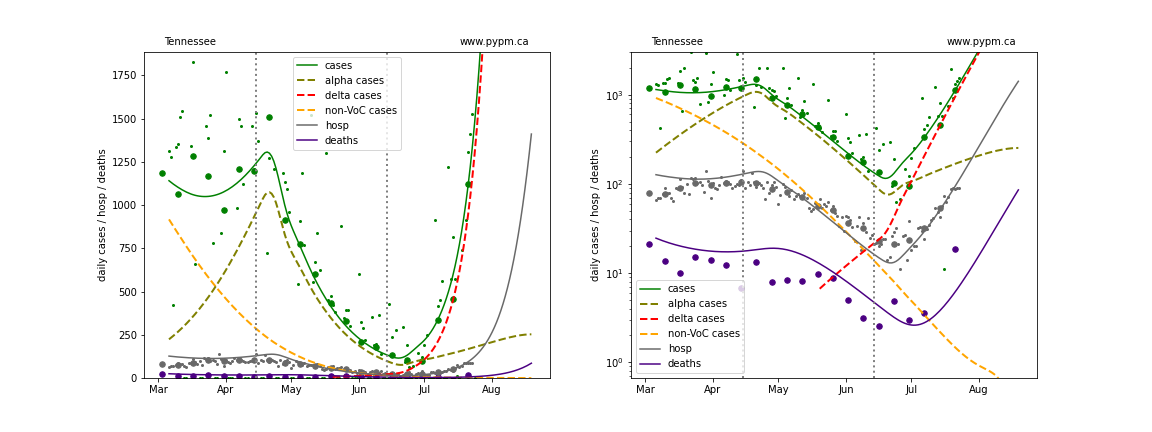
Texas
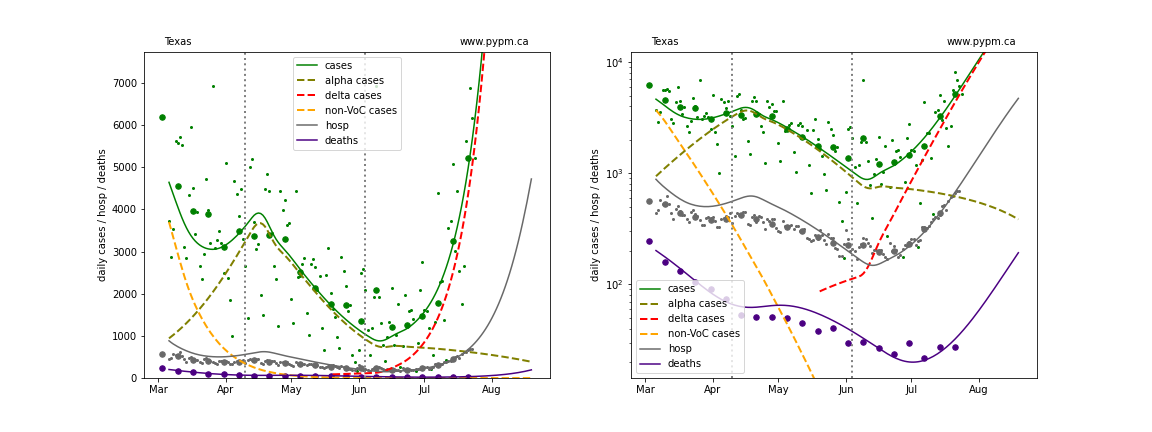
Utah
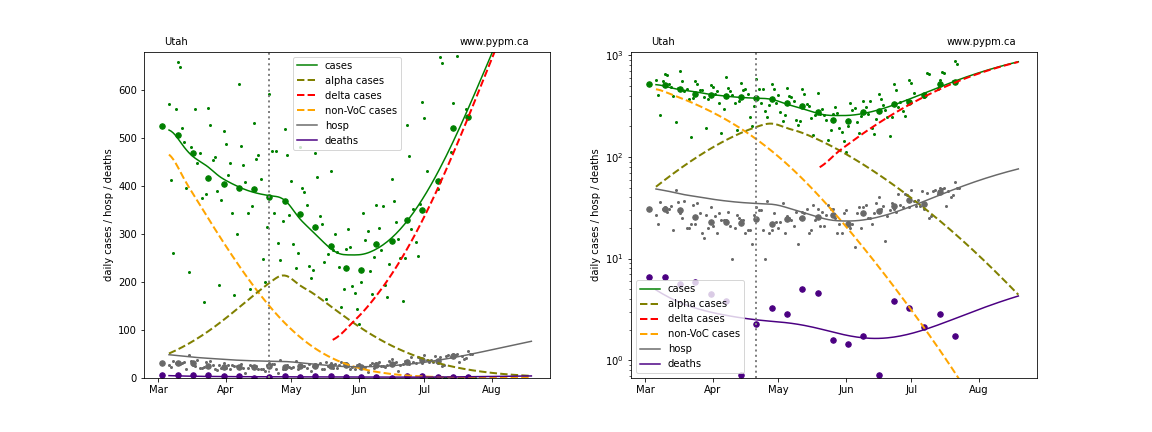
Virginia
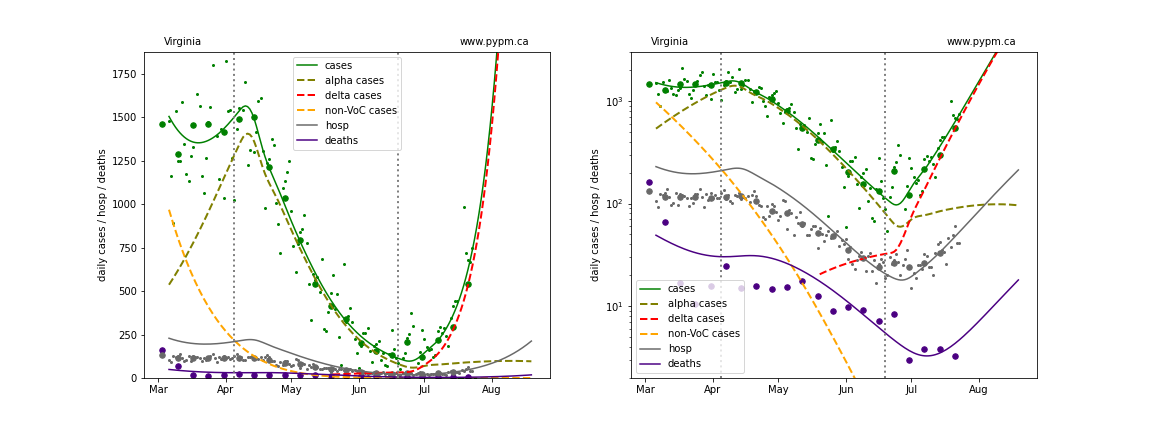
Vermont
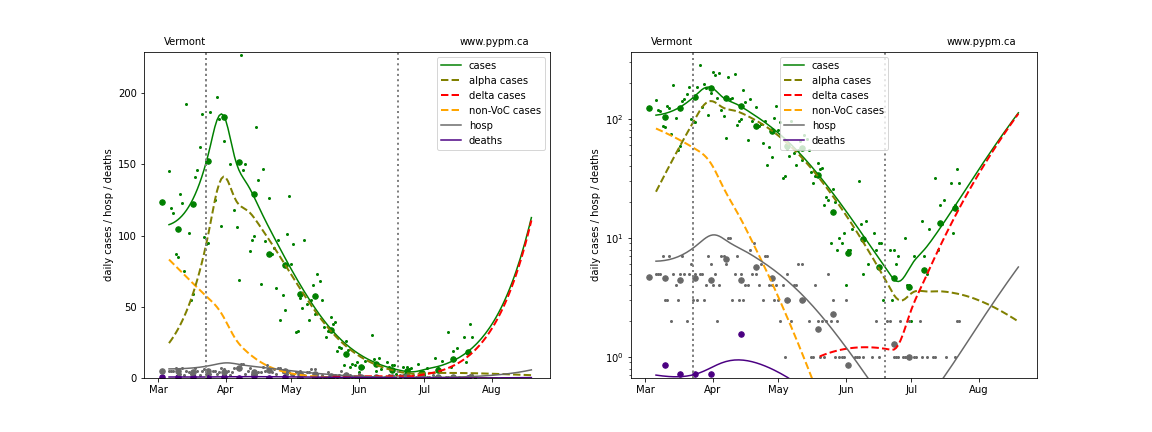
Washington

Wisconsin
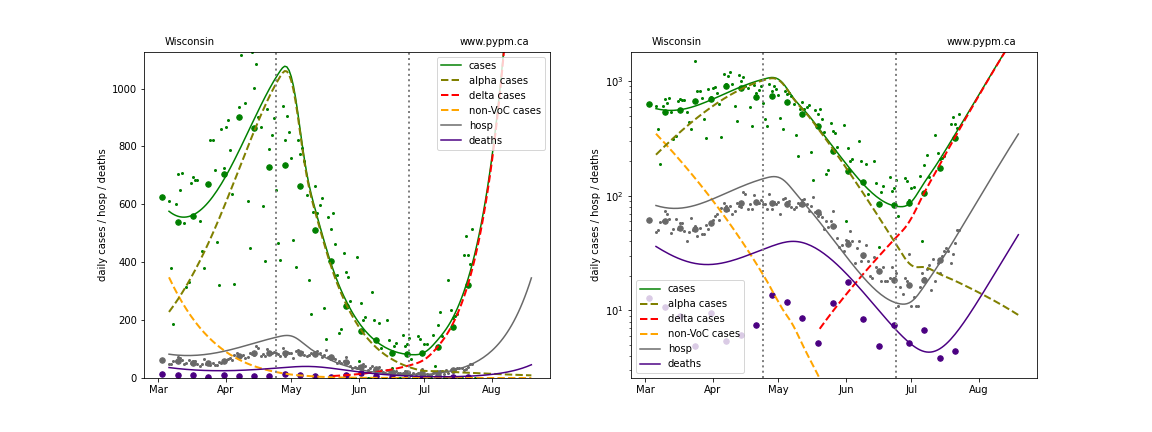
West Virginia
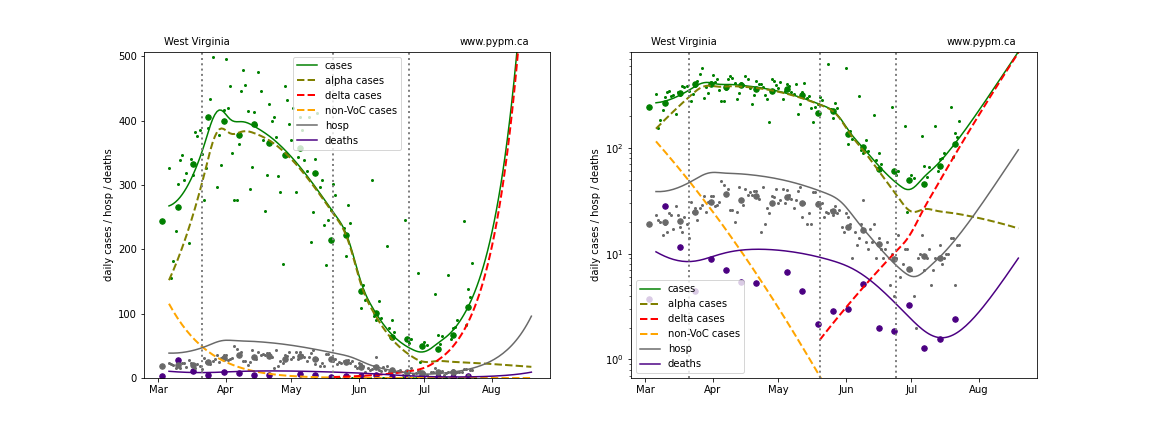
Wyoming
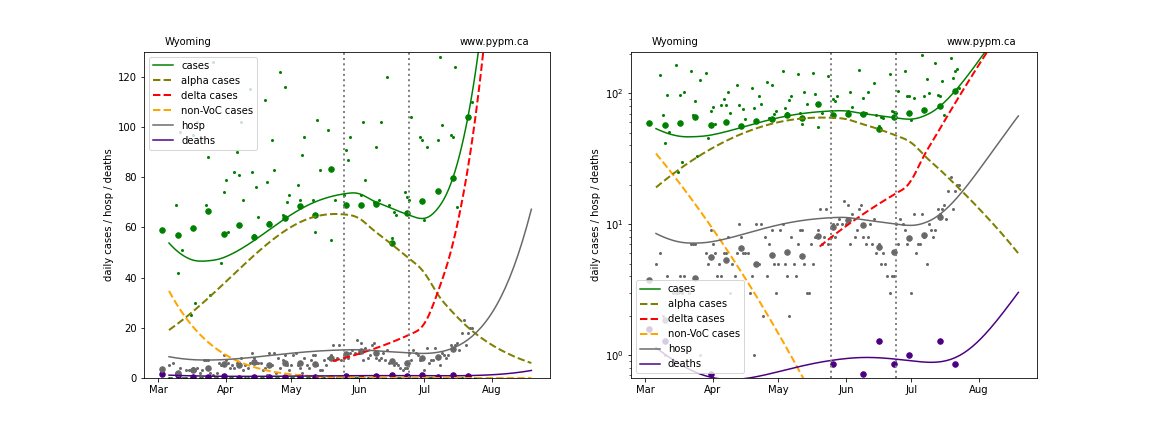
USA Forecast
The following plots show the combined US 4 week forecast. The shaded areas are 50%, 80%, and 95% intervals. Overall, cases are forecast to grow at a rate of about 7% per day (doubling every 10 days).
USA
